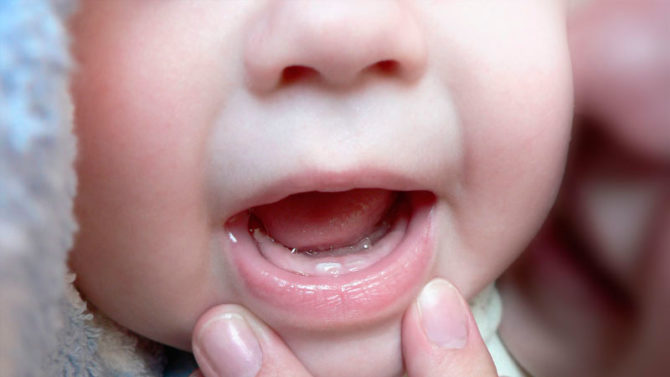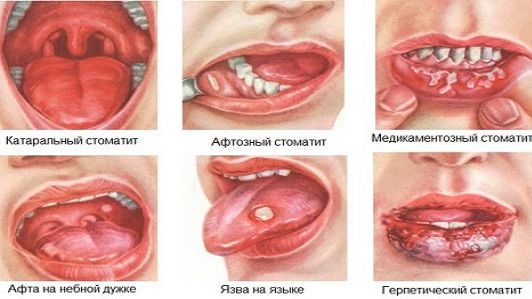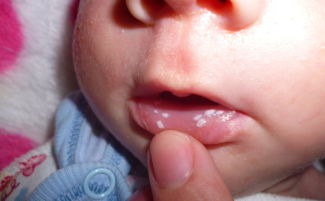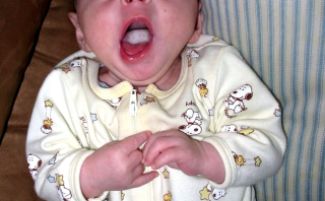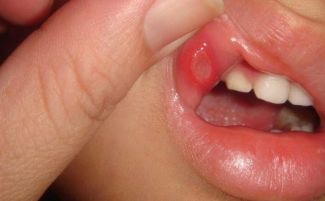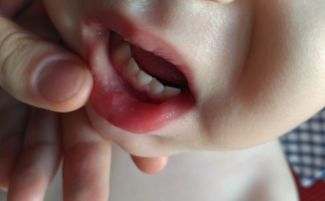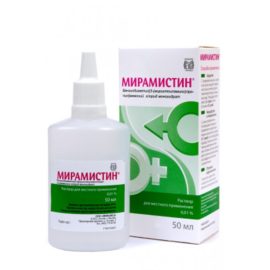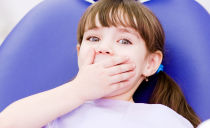Stomatitis in infants: signs, symptoms, treatment, photo
Stomatitis is an inflammation of the oral mucosa. Newborns are more prone to this disease than adults and older children, which is due to their undeveloped immune system and the susceptibility of the child's body to various pathogenic microbes. Treatment of stomatitis in infants is carried out at home under the supervision of a pediatrician.
Content
Common causes
Stomatitis is an inflammatory process in the mouth. Often the disease occurs in young children because of their habit of licking toys and pulling non-sterile objects into their mouths. Sometimes the infection enters the body of the baby from the nipple of the mother during feeding. The disease may not develop if the mucous membrane of the oral cavity of the baby is not injured, and its immunity is well developed. If there are small cracks in the mouth, teeth erupt, or vitamin deficiency is observed, stomatitis may develop in the infant.
Usually the disease is transmitted by contact and airborne droplets. There is also a kind of disease that has a non-infectious nature - aphthous stomatitis. Often, a hereditary genetic predisposition becomes a catalyst for the development of pathology.
Causes of stomatitis in newborns and infants
The disease may well appear in very young children. Stomatitis in the mouth of an infant occurs due to infection from the mother. If a woman had an untreated thrush, then she passes this fungus to her child. The baby's oral cavity looks red and swells, and subsequently becomes covered with a white coating.
Types and symptoms of stomatitis in infants
Depending on the causative agents of pathology, the following forms of stomatitis are distinguished:
- candida;
- aphthous (non-infectious);
- herpetic;
- contact;
- allergic
The initial diagnosis of the disease can be made even by the baby's mother, but after that, you still need to consult a pediatrician so that he prescribes the appropriate treatment. The main symptoms of stomatitis in infants include:
- an increase in temperature from subfebrile values to 40 degrees, a rise in temperature is often ahead of other signs of inflammation by a couple of days;
- white plaque on the gums and tongue;
- small bubbles and spots on the mucous membrane of the mouth, which subsequently turn into white sores;
- severe redness and swelling of the gums;
- difficulty swallowing;
- gluing lips;
- vomiting and diarrhea;
- copious salivation;
- bad breath and throat.
Due to poor health, the baby may refuse to eat, sleep badly at night and behave uneasily.
You can’t try to remove the white coating on your own, this can only injure the mucous membrane and aggravate the disease. Sometimes even an attempt to get wet plaque leads to the appearance of blood on the mucous membrane.
Candidiasis stomatitis in infants
The main causative agents of candidal stomatitis in infants are Candida microorganisms:
- albicans;
- krusei;
- tropicalis;
- glabrata.
These fungi are considered only opportunistic, since they are always on the mucous membrane of the mouth, but under certain conditions they begin to multiply actively and infect nearby tissues. Provoking factors can be:
- decreased immunity or its lack of form (typical for newborns in the first two weeks of life);
- unformed mucosa;
- lack of bacterial balance;
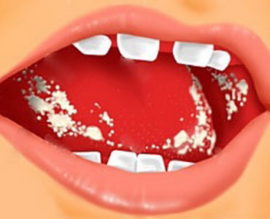 dysbiosis;
dysbiosis;- systemic immunodeficiency;
- diabetes;
- long-term use of antibiotics (the oral cavity is covered with a cheesy white coating).
Before the appearance of vivid symptoms of the candidal form of the disease, increased dry mouth and a burning sensation are observed. Infants begin to act up, whimper and refuse food. Soon, small dots of white color (photo) form on the inner surface of the cheeks and tongue, which later combine to form a light curd coating. If you start the disease, then this plaque will get a dirty gray tint.
Diagnostic measures
After the onset of symptoms of the disease, consult a doctor. In addition to visual inspection, you will need such diagnostic measures:
- Mucosal swab test:
- virological (to determine herpetic stomatitis);
- cytological;
- immunological;
- bacteriological.
- KLA - general blood test.
These studies will help determine the pathogen and the cause of the pathology, because stomatitis in a month old and older child can only be a sign of a more serious systemic disease:
- Shengren's syndrome;
- HIV
It depends on the correct diagnosis how stomatitis in newborns and older children will be treated. If the cause of the pathology is erroneously determined, the doctor may prescribe incorrect therapy, which will only aggravate the situation.
What does stomatitis in an infant look like: photo
Treatment of stomatitis in newborns
A breast (and especially a monthly!) Child with an oral disease should be shown to a pediatrician and ENT specialist. Self-treatment can lead to a deterioration in the condition of the baby. Prescribed medications depend on the type of pathology and its pathogen. For all types of disease, ointments with rosehip extract, sea buckthorn oil and various anesthetic gels that are applied to the gums and the inner surface of the cheeks can be used.
The drugs that can be used to treat herpetic stomatitis in infants include:
That is, the treatment of herpetic stomatitis in newborns and older children is aimed at destroying the pathogenic virus and increasing immunity.
With candidiasis, after each feeding, you need to lubricate the baby's gums and tongue with a solution of soda or boric acid. And you should also treat the mucosa with an antifungal Candide solution.
Symptoms of aphthous stomatitis often occur in infants as an allergy to medications or any food. When the first points and sores (aphthae) appear, you need to revise the child’s diet. And you should also start taking:
- antihistamines;
- immunomodulators;
- vitamins.
Aphthae should be treated daily with antiseptics (Miramistin) and anti-inflammatory gels (Holisal). After eliminating the pronounced signs of stomatitis in infants, you can begin to lubricate the mucosa with epithelizing agents (Solcoseryl-gel).
If the age and general condition of the child (these methods are undesirable for monthly children) will be allowed, then methods of physiotherapy can be used:
- heparin phonophoresis;
- Ultraviolet radiation of the oral cavity.
Treatment of stomatitis in infants at home
Alternative medicine should be resorted to only after the permission of the attending pediatrician. Harvesting herbs and lotions cannot be the main method of combating the disease.
The most famous means for treating stomatitis in infants at home are:
- collections of sage, coltsfoot, chamomile, oak bark, calendula and St. John's wort (in equal quantities);
- a mixture of honey, vegetable oil and chicken egg protein;
- a combination of garlic and yogurt;
- aloe juice and Kalanchoe.
In the treatment of stomatitis in infants, soda can be used. Some parents believe that it is not possible to use it to treat infants in their first year of life, as young children are not yet able to rinse their mouths. But soda and saline are allowed to be used not only for rinsing - they can process red sores and painful areas. The use of this substance contributes to the destruction of pathogenic bacteria and the neutralization of acidity in the oral cavity of even a month old baby.
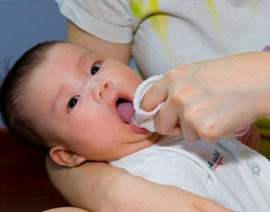 To process the mouth of the crumbs at home can be an ordinary salt solution. To do this, take 1 cup of water and add 1 tbsp. l salt. Then the solution needs to be mixed well and treated with it ulcers in the child 2-3 times a day. After rinsing, a pinch of soda will need to be applied to each aft. If this cannot be done due to the increased activity of the baby, you can initially prepare a solution with salt and soda and treat the inflamed areas with it.
To process the mouth of the crumbs at home can be an ordinary salt solution. To do this, take 1 cup of water and add 1 tbsp. l salt. Then the solution needs to be mixed well and treated with it ulcers in the child 2-3 times a day. After rinsing, a pinch of soda will need to be applied to each aft. If this cannot be done due to the increased activity of the baby, you can initially prepare a solution with salt and soda and treat the inflamed areas with it.
Preventive actions
Stomatitis in a baby is easier to prevent than to treat, so parents should direct efforts to prevent this disease in the baby. It is necessary to observe the basic rules of oral hygiene, temper the body at home and take vitamins. It is necessary to avoid hypothermia of the baby, since any infection can activate the development of dental disease and other pathologies of the body systems.
If the baby is breastfed, then before the feeding procedure, the woman should treat the breast nipples with soda or any other harmless antiseptic. Since the baby receives all the beneficial substances from breast milk, a woman should increase the content of certain trace elements in her food:
- folic acid;
- lysine (it is found in potatoes, fish, eggs and chicken);
- probiotics (found in fermented milk products).
The baby must be in a calm and comfortable environment. Any stress (due to a raw diaper, a prolonged absence of a mother) is a catalyst for the development of pathology.
Children's stomatitis is quite easy to cure if you follow all the doctor’s prescriptions and do not self-medicate. If white dots appear in the child’s mouth, you should not panic; you need to contact a pediatrician to prescribe the appropriate treatment.

